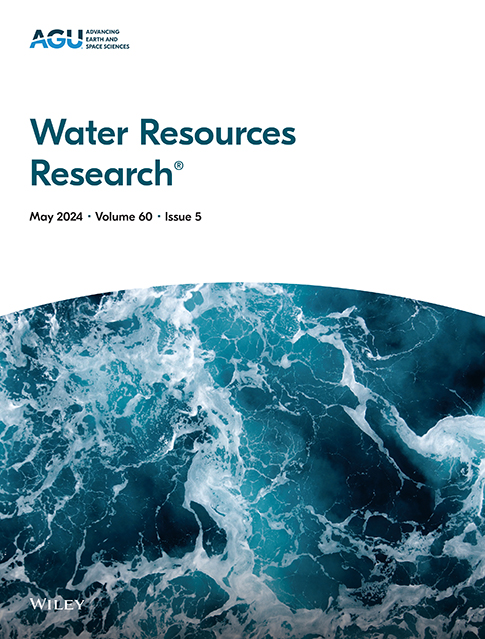Terrestrial Water Storage Changes of Qinghai Lake on the Tibetan Plateau From Joint Inversion of GNSS and InSAR Data
IF 4.6
1区 地球科学
Q2 ENVIRONMENTAL SCIENCES
引用次数: 0
Abstract
Although geodetic techniques like Gravity Recovery and Climate Experiment have been widely applied to investigate terrestrial water storage (TWS) variations at regional or basin scales on the Tibetan Plateau (TP) caused by global warming, their coarse spatial has limited the study of individual lakes. In this study, we overcome this limitation by jointly using Global Navigation Satellite System (GNSS) and Interferometric Synthetic Aperture Radar (InSAR) data to generate a high-precision, high-resolution surface deformation field, enabling the quantitative assessment of TWS changes for Qinghai Lake, from January 2016 to December 2022. By leveraging Independent Component Analysis to extract surface deformation induced by lake hydrological loads, we find that the deformation caused by Qinghai Lake's hydrological changes is spatially limited to within approximately 25 km of the lake and is largely overshadowed by regional background loads of the TP. The region surrounding Qinghai Lake exhibited an overall trend of initial subsidence (from January 2016 to August 2019, −2.89 to −0.30 mm/yr) followed by uplift (from September 2019 to December 2022, 2.20 to 4.89 mm/yr), primarily driven by variations in precipitation patterns. Notably, we found that lake water volume increase accounts for up to 86% of the total TWS changes in Qinghai Lake, underscoring the relatively marginal role of groundwater compared to previous assessments in Inner TP where groundwater accounted for 34% of TWS changes. This study demonstrates the effectiveness of integrating GNSS and InSAR data to overcome spatial resolution limitations, providing detailed insights into the hydrological dynamics of individual lakes like Qinghai Lake, and contributes to a more comprehensive understanding of TP's hydrological changes under the influence of climate change.基于GNSS和InSAR数据联合反演青藏高原青海湖陆地储水量变化
尽管重力恢复和气候实验等大地测量技术已被广泛应用于研究全球变暖导致青藏高原区域或流域尺度上陆地储水量的变化,但它们的粗糙空间限制了对单个湖泊的研究。本研究利用全球导航卫星系统(GNSS)和干涉合成孔径雷达(InSAR)数据,生成高精度、高分辨率的地表变形场,实现了2016年1月至2022年12月青海湖TWS变化的定量评估,从而克服了这一限制。利用独立分量分析(Independent Component Analysis)提取湖泊水文荷载引起的地表变形,发现青海湖水文变化引起的地表变形在空间上局限于湖泊约25 km范围内,在很大程度上被TP的区域背景荷载所掩盖。青海湖周边地区总体上表现为初始沉降(2016年1月~ 2019年8月,−2.89 ~−0.30 mm/yr)后抬升(2019年9月~ 2022年12月,2.20 ~ 4.89 mm/yr),主要受降水模式变化驱动。值得注意的是,我们发现湖泊水量增加占青海湖总TWS变化的86%,与地下水占总TWS变化的34%相比,地下水的作用相对较小。本研究证明了GNSS和InSAR数据整合克服空间分辨率限制的有效性,提供了青海湖等单个湖泊水文动态的详细信息,有助于更全面地了解气候变化影响下青藏高原的水文变化。
本文章由计算机程序翻译,如有差异,请以英文原文为准。
求助全文
约1分钟内获得全文
求助全文
来源期刊

Water Resources Research
环境科学-湖沼学
CiteScore
8.80
自引率
13.00%
发文量
599
审稿时长
3.5 months
期刊介绍:
Water Resources Research (WRR) is an interdisciplinary journal that focuses on hydrology and water resources. It publishes original research in the natural and social sciences of water. It emphasizes the role of water in the Earth system, including physical, chemical, biological, and ecological processes in water resources research and management, including social, policy, and public health implications. It encompasses observational, experimental, theoretical, analytical, numerical, and data-driven approaches that advance the science of water and its management. Submissions are evaluated for their novelty, accuracy, significance, and broader implications of the findings.
 求助内容:
求助内容: 应助结果提醒方式:
应助结果提醒方式:


